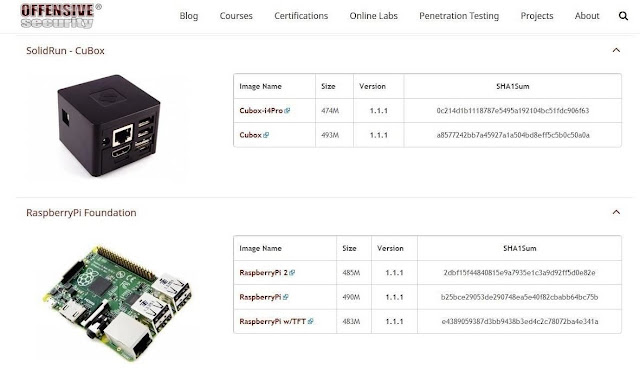I will show you how to create a hacking Raspberry Pi (for those of you are unaware, a Raspberry Pi is a tiny, inexpensive, credit-card sized computer that is powerful)
Download the ARM Version of Kali
The first step, of course, is to download the ARM version of Kali. Raspberry Pi and many mobile devices use ARM CPUs as they are more energy efficient and cooler, so the Kali operating system must be compiled specifically for it.
Fortunately, the goods folks at Offensive Security have already done this for us. Navigate to Offensive Security's download page to get the Raspberry Pi file. Once you have downloaded the image, unzip it with WinRAR, WinZip, or any other archiving tool that can unzip files.
Download & Install Win32 Disk Imager
Now we need to install the Win32 Disk Imager, which you can download from SourceForge. This tool enables us to write the image to an SD card or USB drive. I recommend a fast SD card of at least 4 GB. You can buy a 16 GB now for about 7 dollars.
Run Disk Imager
Now that you have installed Disk Imager, right click on it and run it as "administrator."
Select the Kali image in the "Image File" window, direct the image to your SD card in the "Device" window, then click on the "Write" button. Be patient, this can take some time.
If you using Linux, things are bit simpler. No need to download anything. You simply use the dd command (among other things, the dd command is used to create a disk image in digital forensics). If we assume the image is named Kali-RPI.img and the SD card is at /dev/sdc and we want it to copy in 512k block size (bs), then we simply need to type:
kali >dd if =Kali-RPI.img of = /dev/sdc bs=512k
Install the SD Card in the Raspberry Pi
We need to remove the SD card from your PC and now install the SD card into our Raspberry Pi and boot it up. When it boots up, it takes you to a command line opening asking you for your username and password. Type in:
username: root
password: toor
password: toor
Then type:
kali > startx
This starts the X11 GUI for Kali. Success! Now you have a tiny Kali hacking tool that can be placed anywhere!


